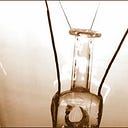How to Accurately Identify Competitive Forces
Who are your most cunning competitors?
3 min readOct 30, 2013
Example of Porter’s Five Forces Porter’s five forces model of industry competition is a model that is used in various hospitality establishments, regardless of location. In this model, there are many things to consider when assessing competition (Quick MBA, n.d.). In no particular order, they are as follows:
- Potential entrants: When assessing the potential competition, a hospitality establishment must consider more than just the current competition; it must look at competition that doesn’t yet exist. It is wise to examine where those potential entry points are and then develop strategies to address those as they happen as opposed to addressing them after the fact. It becomes a matter of acting or reacting. Mary Beth—a restaurant owner who is considering expanding her establishment—must plan for new competition down the road. Even though she may have her current competition figured out, she has to consider what is coming up around the corner.
- Customers: Customers are always going to have a certain amount of power in business. It is a critical mistake to assume that the customer has no choices. While it may seem counterintuitive to view customers as competition, that is what they are. They have bargaining power and with that power, they have the ability to affect the company’s bottom line. If Alfonso wants to purchase new equipment for his café, what kind of impact will that have on the customer? Will the customer approve of the changes, or will they go somewhere else?
- Substitutes: Are customers willing to use an alternative to your product or service? Is the service or product your hospitality establishment offers one that customers can do without? Is your product or service all or nothing, or can you cater to a customer who needs something different than what you traditionally offer? These are all things that must be considered in the planning process. Will the economy have a negative impact on Mary Beth’s newly expanded establishment? Will customers order what they have always ordered? Will they go out fewer times each month to offset a bad economy?
- Suppliers: Vendors and suppliers are the lifeblood of most companies. There should always be a consideration about whether a hospitality establishment is getting the most out of its vendors and suppliers. It quite literally pays to examine your relationships with your vendors. Alfonso is always looking for better deals from his vendors. Should he consider changing vendors to get a better price? Does a better price offset the risk he is taking by changing product?
- Rivals: This is the most natural consideration when discussing the competition. Successful hospitality establishments are always looking at what the competition is doing and how they are doing it. It is in this mindset that we usually work through the SWOT analysis. Both Mary Beth and Alfonso need to consider what the competition is doing. Are the changes they are considering putting them in a better position to succeed?

